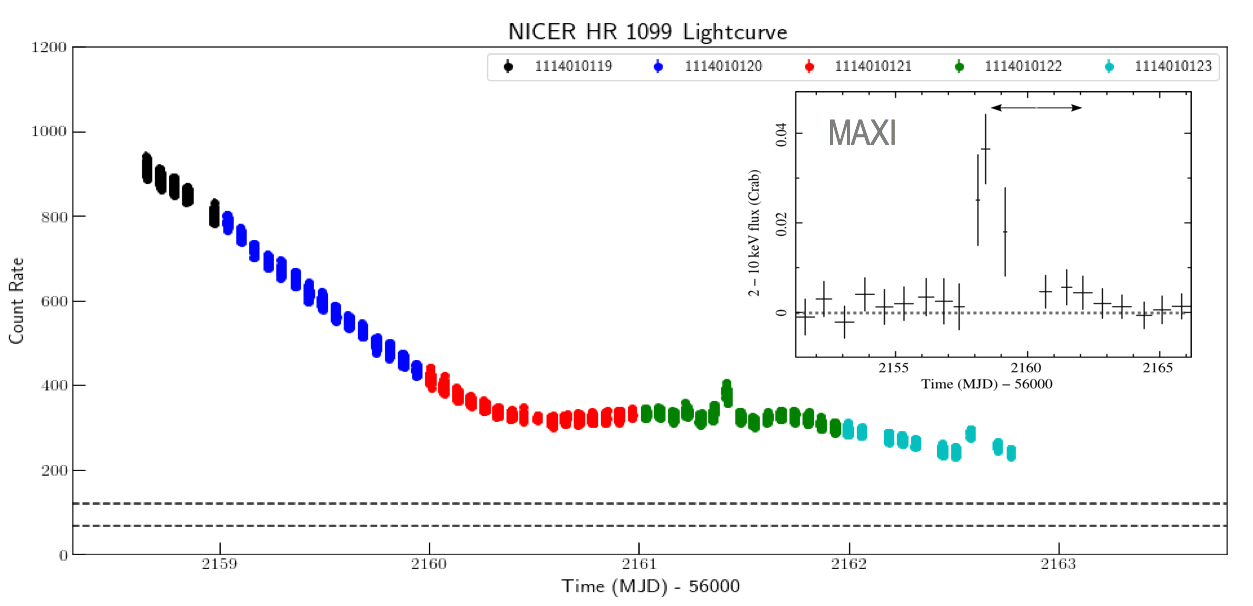NICER / ISS Science Nugget for November 1, 2018NICER watches a flare from a nearby stellar systemOn February 9, 2018, an X-ray transient was detected by the MAXI all-sky monitor on-board ISS, consistent with the position of the nearby binary system HR 1099. The stars in this system, also known as V711 Tau, orbit one another every 2.8 days; the more massive of the two is magnetically active, exhibiting sunspots and flares. In response to the detection alert from MAXI, NICER began observing the Feb 9 flare in its early decay phase, and made an extensive series of sensitive observations over the next four days. The NICER observations show a near-linear decline in X-ray flux for the first 1.5 days, followed by a fairly constant "plateau" level (with a small secondary flare) for the next 1.5 days, and then a resumption of the decline in the final day. At the end of this time, the flux was still a factor of 3-4 times brighter than the star's typical non-flaring level. The high count rates recorded by NICER of 300-900 photons per second during the decay of this flare enabled time-resolved X-ray spectroscopy on timescales as short as 1 minute or less, yielding measurements of the flare plasma's properties such as temperatures, emission measures, and chemical abundances over the duration of these observations.
Among other results, the NICER data provide evidence – increased absorption of X-rays by intervening gas – for a "coronal mass ejection" by the star in the early hours of the flare. NICER
|



